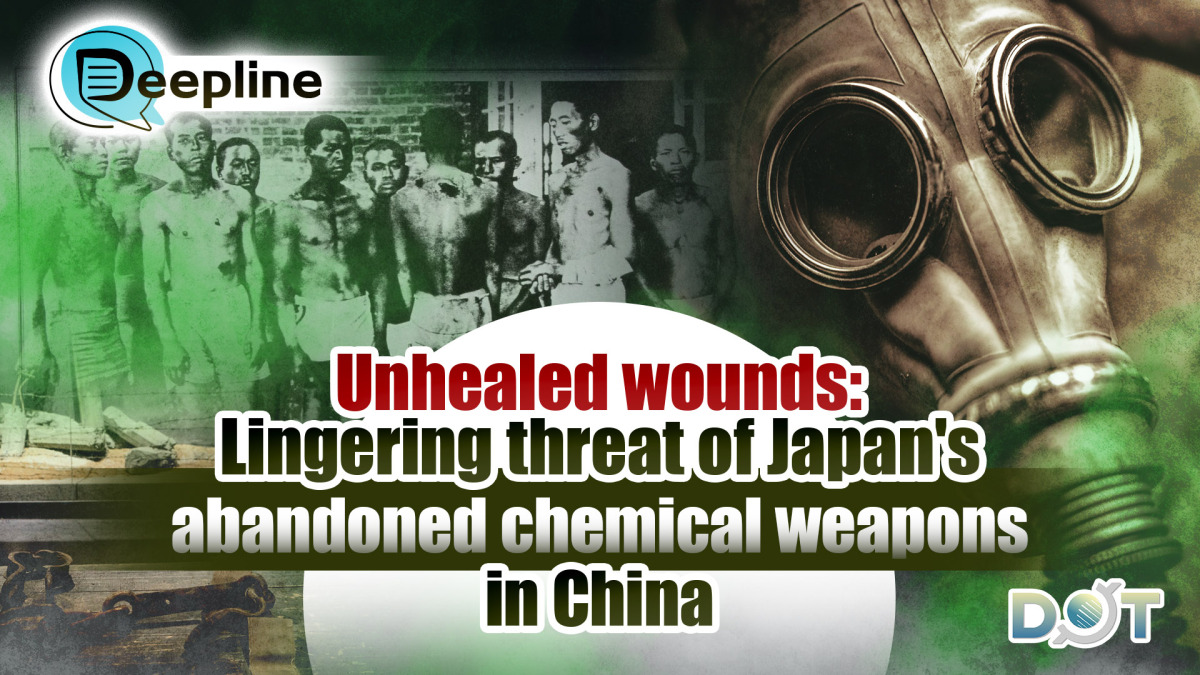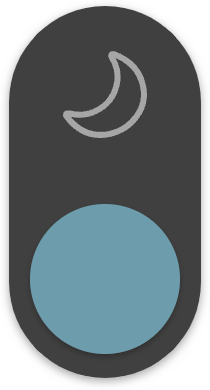
Eighty years ago, under the pressure of time as they retreated in defeat and to cover up the fact that they had openly violated the Hague Convention by producing and using chemical weapons, the Japanese invading forces abandoned a large number of chemical weapons. China's Ministry of Foreign Affairs previously stated that Japan had excavated and recovered over 160,000 abandoned chemical weapons and destroyed about 130,000, which means that 30,000 abandoned Japanese chemical weapons remain unprocessed.
According to data from a report released at the 94th session of the Organization for the Prohibition of Chemical Weapons (OPCW), it is estimated that in Harbaling, Jilin Province alone, there are over 330,000 abandoned chemical weapons awaiting excavation and recovery. As time passes, the "safety" of these abandoned Japanese chemical weapons is diminishing.
Liu Hao and Zhou Tong, two post-90s youths from Dunhua City, Jilin Province, are the youngest victims of the Japanese invading forces that our Wen Wei Po reporter was able to interview. Although they were harmed in 2004, nearly 60 years after Japan's unconditional surrender, the incident that occurred over 20 years ago continues to cast a long shadow over their lives. That sudden poisoning accident robbed them of their health and carefree youth, and most directly, extended the brutality of war into the lives of a new generation. The physical pain and psychological trauma have intertwined into an unhealable wound that will accompany them for life.
Children disabled by mustard gas
On July 23, 2004, in Dunhua City, 9-year-old Liu and 12-year-old Zhou went to bathe in a small river near their home. A heavy rain a few days earlier had swelled the river, but along with the rainwater, something that would change their destinies was washed down—a discarded Japanese chemical weapon filled with mustard gas, its shell nearly rusted through.
The two boys playing in the water were drawn to the shell. Curious, Zhou picked up a stick and poked it. Suddenly, a liquid spurted out, splashing onto his right hand and leg. Liu, standing nearby, also got some on his leg. Confronted with the acidic smell that accompanied the liquid, the two boys did not sense the danger. They simply rinsed off in the river and continued examining the shell. Zhou even carried the leaking shell on his back while playing, discarding it only when he went home for dinner.
That evening, the skin on Liu and Zhou that had come into contact with the shell and the splashed liquid simultaneously became red, swollen, and painful. At first, their families thought it was just an allergy and applied an anti-allergy ointment. But soon, both boys experienced severe pain and developed large blisters.
"The blisters were like those from scalding hot water, but they were... huge. The fingers were connected by blisters, with no gaps in between. The areas touched by the liquid were bright red and stung like needle pricks," their families recalled. Realizing something was wrong, the parents rushed them to the hospital. The diagnosing doctor confirmed that Liu and Zhou had moderate mustard gas poisoning.
50 years of pain and suffering
Liu Zhenqi, now over 70, was once a crew member of the Hongqi 09 vessel under the Waterway Engineering Department of the Heilongjiang Provincial Shipping Bureau. During an interview with a Wen Wei Po reporter, he deliberately kept his hands hidden. Throughout the more than two-hour interview, his hands never touched anything.
A friend accompanying him explained, "He doesn't know when his hands might become infected again, so he rarely uses them to touch external objects." After hearing his friend's explanation, Liu seemed to make a firm decision and raised his hands for the reporter to see. They were hands marked by the intertwining of time and illness—rough, dry, and cracked skin, especially severe on the left hand, which was covered with large, varying shades of purplish-black bruises and festering, scabbed sores. The uneven, scarred surface looked as if it had been burned by fire. The relatively better right hand also showed obvious damage and pigmentation, with tight skin around the joints. This condition traces back to 1974 when he was a crew member on the vessel.
In 1974, the western dock entrance in Jiamusi City, Heilongjiang Province, had silted up due to long neglect. On October 18, the Hongqi 09 was tasked with dredging. Around 1:10 a.m. on October 20, the mud pump at the bottom of the ship made a crashing sound, mud discharge was blocked, and the diesel engine stopped. Song Weihua, then director of the Safety Production Office of the Heilongjiang Provincial Shipping Administration, who was also on the ship, recalled to the Wen Wei Po reporter that Xiao Qingwu and his two apprentices, Li Chen and Liu Zhenqi, along with intern Wu Jianning, disassembled the mud pump for inspection.
A smell mixing mustard and rotten fish assaulted them, causing immediate dizziness, vomiting, and the need to go on deck for air. Their eyes remained red, swollen, and teary. Unfamiliar with abandoned Japanese chemical weapons, they did not recognize the severity of the situation. After a short break, Xiao went back down to investigate and found a shell in the pump casing with a broken head, emitting yellow gas and black oil. The four of them cleared the shell out by hand.
By 3 a.m., Li, who had handled the shell, felt unwell again, and the other three also had dark purple faces. At the 5 a.m. shift change, Li's hands were red, blistered, and itchy, while Liu Zhenqi's hands were swollen. When all 35 crew members showed varying poisoned reactions, they realized something was wrong.
"The captain contacted various hospitals, and it was finally determined to be poison shell poisoning. They needed to go to a military hospital for treatment," Song said. The Heilongjiang Provincial Shipping Bureau extended the labor contracts of nine temporary workers on the ship to monitor their poisoning conditions. But by 1977, the poisoning symptoms still had not dissipated.
"The toxins continuously harmed them. Common issues included declining eyesight and frequent inflammation of the throat, trachea, and lungs."
Frequent incidents caused by abandoned Japanese chemical weapons
Gao Xiaoyan, a researcher at the Heilongjiang Provincial Academy of Social Sciences who has long been engaged in the study of chemical weapons abandoned by the Japanese army, investigated the condition of the poisoned crew of the Hongqi 09. Many of the 35 poisoned crew members have since passed away, with an average age of death of only about 50. Three died of lung diseases, including Xiao and Li.
In an interview, Gao stated that since the 1950s, incidents of harm from abandoned Japanese chemical weapons have continuously occurred in Northeast China. In the autumn of 1945, people in Fulaerji, Qiqihar City, Heilongjiang Province, went to a former Japanese army warehouse to pick up leftovers, resulting in multiple cases of mustard gas poisoning. In August 1950, when the former Heilongjiang First Normal School was constructing school buildings, two poison agent cans were dug up, causing casualties. On October 19, 1987, over ten people were affected in a poison agent incident at China First Heavy Industries. Even after entering the 2000s, related incidents still occurred occasionally, though the scope expanded beyond Northeast China.
Lethal toxin
The chemical name for mustard gas is dichloroethyl sulfide. At room temperature, it is a pale yellow to brown oily liquid, almost insoluble in water, with a smell of garlic or mustard. Mustard gas is a highly dangerous, delayed-acting blistering agent that causes severe damage to the skin, eyes, respiratory tract, and immune system, leading to lifelong health issues.
According to multiple research papers on mustard gas from the National Center for Biotechnology Information of the U.S. National Institutes of Health, skin contact with mustard gas can cause redness and blisters within 2 to 24 hours. Inhalation of vapor can damage the nasal, tracheal, and bronchial mucosa, causing coughing and difficulty breathing, and in severe cases, pulmonary edema. Eye contact, even in low doses, can cause conjunctivitis, tearing, and photophobia, with severe cases leading to corneal ulcers or even blindness. High levels of exposure can cause bone marrow suppression, reduced immune function, and increased risk of infection. Among survivors, those with bronchiectasis and pulmonary fibrosis have a significantly higher risk of lung cancer.
(Source: Wen Wei Po; English Editor: Darius)
Related News:
Deepline | Recommending list of anti-fascist films: What are they, and why?




















Comment